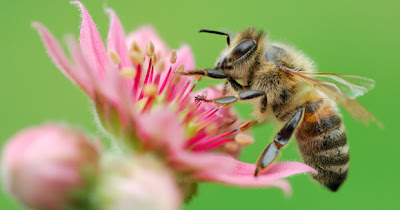What is pollination?
The term refers to pollination removal or transfer of pollen from a flower that produces it, to another flower of the same species, in principle, that it receives. This phenomenon is so simple at first glance, associate brings an immediate and far-reaching, such as the formation of the fruit , of vital importance in agriculture, as we shall see and seed formation , which will help the plant to perpetuate and multiply their species.
In fact, higher plants can be multiplied also by other systems, the general from portions of the plant capable of regenerating the entire plant body, but these methods are much less important biological reproduction by seed, with its varied However, it is the last link of a long natural process that precedes it, in a series fruit-flower-seed, a direct result of pollination.
The types of pollination
Although many plants are hermaphrodites, ie they have both reproductive systems (male and female) located in the same flower, hardly ever played together (autogamy) and the pollen from one flower to another flower travels of the same species, or another similar characteristics to fertilize. This is what is known as cross-fertilization or heterogamy. This phenomenon gives the child an increased chance of survival while a different genetic makeup and variable, so that the common standard in all vegetables and especially those of agricultural interest, it is precisely this type of fertilization , which also produces better results in crop production.
 In general, there are three types of pollination: it is called anemophilous when pollen reaches the flowers carried by the wind; hydrophilic when the transport is done by the water, and finally zoophilic when run by an animal. The latter is much more frequent and effective. Within zoophilic pollination, undoubtedly the most important is entomophilous, ie, pollination by insect pollinators.
In general, there are three types of pollination: it is called anemophilous when pollen reaches the flowers carried by the wind; hydrophilic when the transport is done by the water, and finally zoophilic when run by an animal. The latter is much more frequent and effective. Within zoophilic pollination, undoubtedly the most important is entomophilous, ie, pollination by insect pollinators.
No wonder it is the most prominent, if we consider that these are the largest group within the Animal Kingdom. In addition, insects are spread throughout the land, often flying and have a size suitable for this task.
Thus, flowers and insects are the clearest example of mutualism between animal and vegetable.Thousands of years of evolution, have mutually adapted so that two great advantages achieved thereby. If the color, elegance, grace and fragrance of the flowers attract us and arouse our sensitivity, within the natural universe are not intended to represent our feelings, but to attract pollinating insects, which act as intermediaries in fertilization.


 Posted in:
Posted in:
2 comments:
Excellent writing. This informative article help me a lot to know about the pollination and their necessity in the world.
Hey, that’s a clever way of thinking about it.
---------------------------
cotton exports | milk exports
Post a Comment